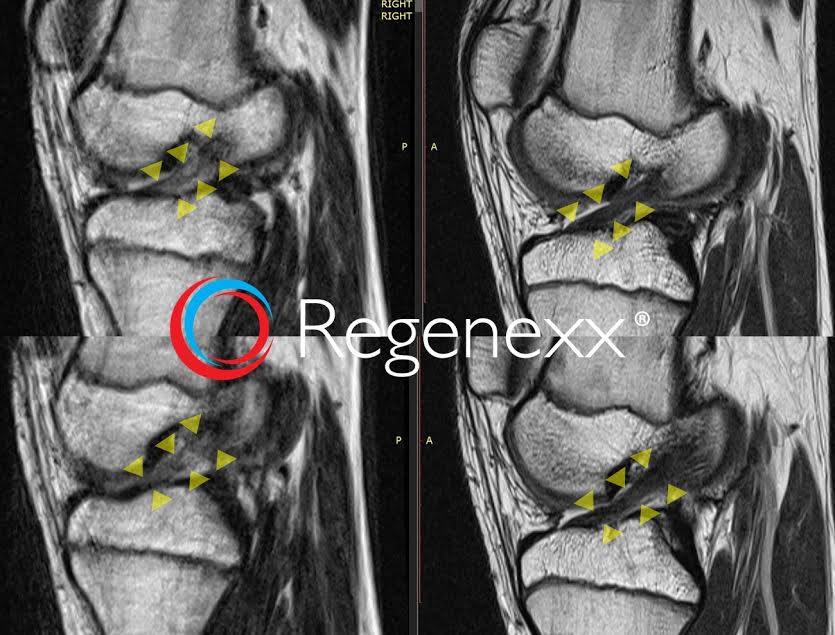ACL Knee Surgery Side Effects: Helping Teens Avoid the Knife
Why are we treating our kids like NFL athletes? While aggressive orthopedic surgery in kids used to be rare, these past 10 years it seems like the norm. One of the areas of pediatric orthopedic surgery that has exploded is ACL reconstruction. However, as I’ll explain, while the research is suggesting that ACL knee surgery side effects may be worse in kids, a new approach is gaining steam to help heal ACL injuries without surgery.
Why Operating On a Kid’s Knee Has Consequences
I’m a parent, so I get the gut-wrenching forces that drive medical care decisions in kids. So when a teenager sustains a tear in the ACL, the main stabilizing ligament of the knee, it’s devastating to see that previously active kid hobbling around like an 80-year-old. Having said that, what if those same emotions were driving bad decisions that could end up hobbling that kid as a young adult? That’s the problem with ACL surgery in a teen—it’s likely the wrong move. Most parents simply don’t know yet about the very real ACL knee surgery side effects in kids.
A few years back, a study was presented at a major sports-medicine conference that looked at kids who were 12–16 years old who underwent ACL surgery for a complete tear in the knee ligament. They were followed for 14 years, until they were 26–30 years old. What did the researchers find? That two-thirds of the kids who got the ACL surgery had arthritis! How did the non-operated knee fare? Only 14% had arthritis in that knee, so these kids weren’t naturally predisposed to getting arthritis.
Let that sink in for a moment. The whole point of operating on kids with knee ACL tears was that by “fixing” the ligament, we were supposed to prevent the early onset of arthritis caused by joint instability.
So why are we exposing these kids to the risk of a big surgery? If every parent in America was told about the ACL knee surgery side effects in the informed-consent process for this surgery, how many would choose to proceed? I know I would say no. Is there a better way forward?
Peter’s Story
I have a very active 12-year-old boy, and it would emotionally wreck me to see him unable to play sports or unable to run. Peter’s parents were faced with that situation. This 13-year-old had his ACL torn while being tackled from behind while playing football. When he first saw Dr. Pitts at our Colorado clinic, he had pain with walking and was unable to run. He was of course offered ACL surgery, but his parents did their homework and realized there were significant risks, so they found us online and wanted to go the nonsurgical route. So in February of this year, Peter had his stem cells harvested, and then Dr. Pitts precisely injected them into the ACL under fluoroscopic guidance (patented Regenexx-SD procedure), carefully ensuring they were placed throughout both bundles of the ligament. The result?
Within a few weeks, Peter returned to baseball with a brace about the time he would have been cleared to get off crutches and begin rehab after surgery. That’s a bit quicker than we advise, but it’s good to have the amazing healing capacity of a 13-year-old! He’s now able to run without pain, and here are his three-month postinjection images: 
Note that I’ve placed little triangles along the course of the ACL to help you see where it should be. The preinjection images on the left show a ghostlike ACL, which is barely visible. The postinjection images show a very dark and robust ACL that looks more normal in appearance.
The upshot? We’ve now saved many kids from ACL surgery using the precise, guided stem cell procedure that we invented here in Colorado and that’s now available throughout the U.S. through our national medical group of Regenexx clinics. Will many of these kids, 14 years from now, also have arthritis? While I can’t answer that yet (our first ACL stem cell procedure was 5-plus years ago), given that they got to keep their natural ligament and that stem cells can also help repair cartilage lesions, I would doubt it. We have published one paper on knee ACL stem cell injections and are about to submit a larger group of patients with MRI findings. We also have a no-charge, knee ACL stem cell injection randomized controlled trial that we are recruiting for now; we take seriously that it’s our job to prove that our much-less-invasive and paradigm-shifting procedure is better than traditional surgery. Having said that, damn, I sure do like the look of all of these postinjection MRIs!

If you have questions or comments about this blog post, please email us at [email protected]
NOTE: This blog post provides general information to help the reader better understand regenerative medicine, musculoskeletal health, and related subjects. All content provided in this blog, website, or any linked materials, including text, graphics, images, patient profiles, outcomes, and information, are not intended and should not be considered or used as a substitute for medical advice, diagnosis, or treatment. Please always consult with a professional and certified healthcare provider to discuss if a treatment is right for you.